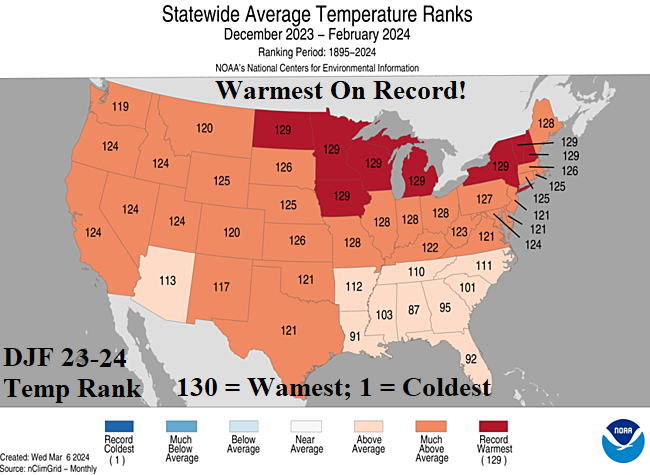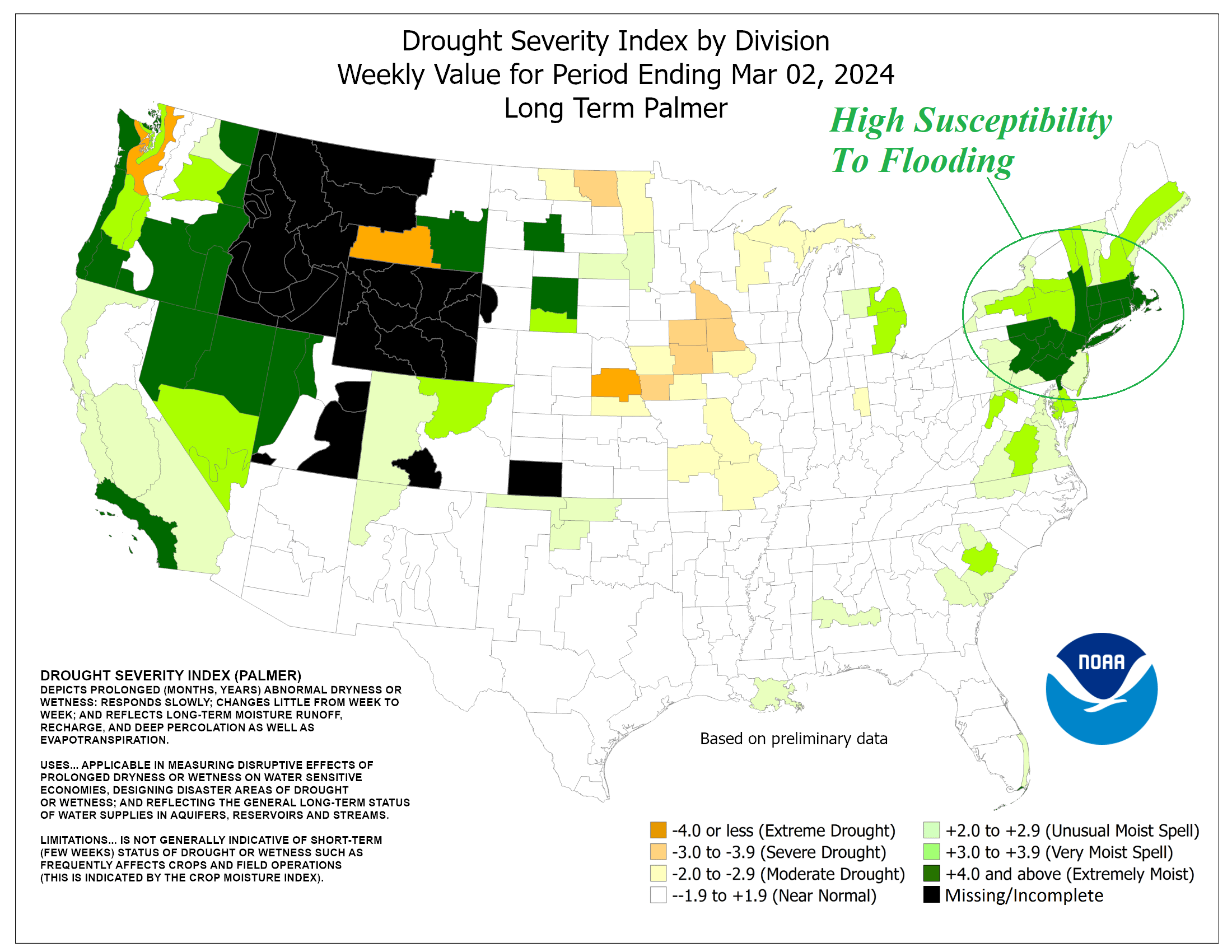
Soaking Wet Northeast U.S. Soils
03/05/2024, 5:51 am EST
Searing Heat Beneath Subtropical Ridge in Brazil/Paraguay
03/11/2024, 9:22 am EDTDiscussion: Renewed concern regarding drought in the Midwest U.S. as meteorological spring is underway. The catalyst of this concern is long-term below normal precipitation especially in Iowa recently accelerated by record warmth and near record dryness across the Midwest States during February (Fig. 1-2). Nationally, February was the 5th warmest on record (130 years) and included record warmth for Minnesota, Wisconsin, Iowa, and Missouri. All the 48 contiguous states were warmer than normal except Florida. The entire northeast quadrant of the U.S. was very dry in February with wet climate centered on Nevada.
The meteorological winter 2023-24 was the warmest on record (Fig. 3). This observation is made more impressive given that there was one arctic outbreak during mid-winter. Warmer than normal mid-latitude SSTA contributed to the already mild bias caused by El Nino. Record warmth was observed in 8 states: North Dakota, Minnesota, Iowa, Wisconsin, Michigan, New York, Vermont, and New Hampshire. A historical depletion/absence of snow cover in each of these northern states enhanced the mild climate. All 48 contiguous states observed a warmer than normal meteorological winter.
The winter season was the 22nd wettest on record although snowfall was one of the top 5 least snowy. The Mid-Atlantic States to New England observed MUCH ABOVE normal precipitation (Fig. 4). Kansas observed MUCH ABOVE normal precipitation. Only 3 states, Montana, Wyoming, and Wisconsin received a drier than normal winter season.
During meteorological winter 2023-24, the global oceans were unusually warm especially in the tropics thanks to El Nino, positive phase Indian Ocean dipole (+IOD), and record warmth in the Atlantic tropics. In fact, the February 2024 global sea surface temperature anomaly (SSTA) was the warmest on record. The widespread anomalous warm ocean was reflected in the atmosphere.
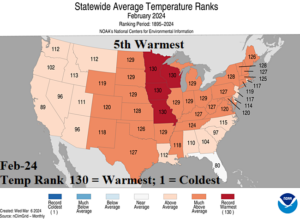
Fig. 1: February 2024 state temperature ranks based on 1895-2024 climatology.
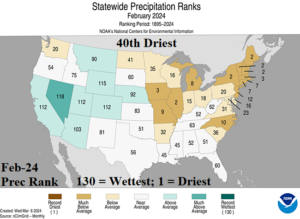
Fig. 2: February 2024 state precipitation ranks based on 1895-2024 climatology.
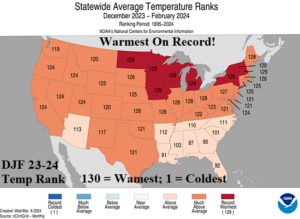
Fig. 3: DEC/JAN/FEB 2023-24 state temperature ranks based on 1895-2024 climatology.
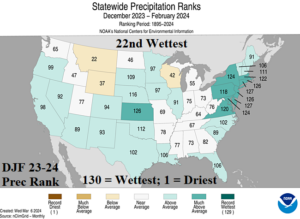
Fig. 4: DEC/JAN/FEB 2023-24 state precipitation ranks based on 1895-2024 climatology.

